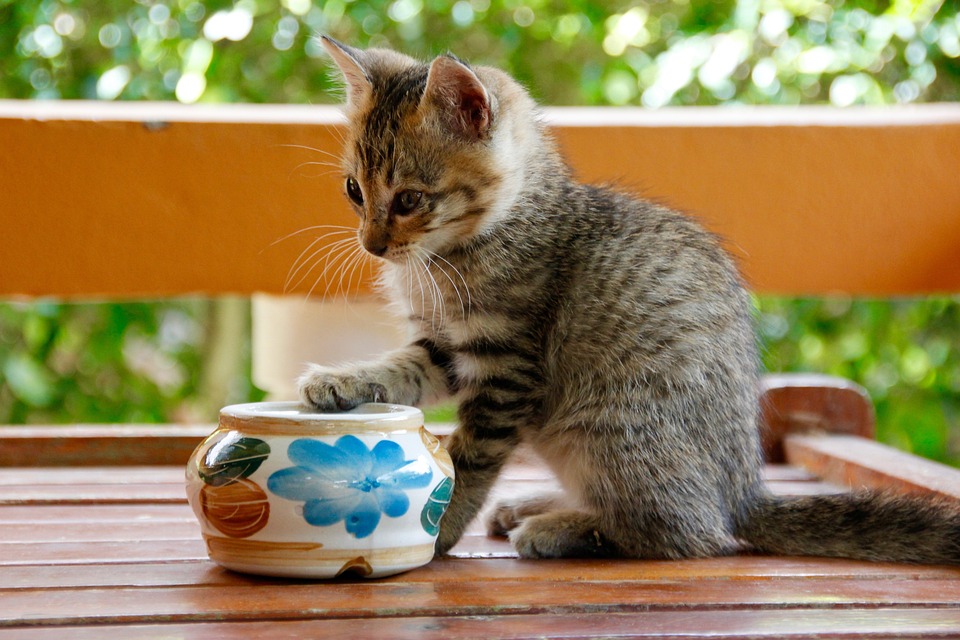Creating a safe and enriching outdoor environment for your cat can offer numerous benefits, including mental stimulation, exercise, and a closer connection to their natural instincts. However, it’s essential to ensure that your cat’s outdoor experience is safe and secure. In this article, we will guide you through the steps to create a suitable outdoor environment for your cat, while addressing frequently asked questions along the way.
Before delving into the specifics of creating a safe outdoor environment for your cat, let’s explore the advantages of allowing your feline companion to venture outdoors.
1. Mental Stimulation: Outdoor exploration provides cats with a myriad of sensory experiences, such as smelling different scents, observing wildlife, and encountering various textures. These stimuli contribute to mental enrichment, preventing boredom and promoting overall well-being.
2. Exercise: Cats need regular exercise to maintain a healthy weight and prevent obesity-related issues. Outdoor environments usually offer more space for cats to run, climb, and engage in physical activities, allowing them to burn off excess energy.
3. Natural Instincts: Cats are natural hunters and explorers. Allowing them to experience the outdoors satisfies their instinctual needs, resulting in a happier and more contented feline.
Now that we understand the benefits, let’s discuss the steps to create a safe and enriching outdoor environment for your cat.
1. Secure Your Outdoor Space:
– Install a Cat-Proof Fence: Consider adding a cat-proof fence around your yard to prevent your feline friend from wandering off or encountering potential dangers.
– Check for Small Openings: Inspect your outdoor space for any small gaps or openings in fences or gates that your cat might squeeze through. Close or cover these openings to keep your cat safe.
– Avoid Toxic Plants: Research and remove any toxic plants from your outdoor area, as they can pose a serious threat to your cat’s health if ingested.
2. Provide Shelter and Shade:
– Outdoor Cat Enclosures: Consider investing in a spacious outdoor cat enclosure or catio. These structures provide a safe and controlled environment for your cat to enjoy the outdoors while protecting them from potential hazards.
– Covered Areas: If an outdoor enclosure isn’t feasible, create covered areas in your yard using cat-friendly materials like a small shed, canopy, or even a covered patio space. These areas will offer shade and shelter during hot or rainy weather.
3. Offer Entertainment and Stimulation:
– Climbing Structures: Install cat-friendly climbing structures like scratching posts, cat trees, or even specially designed outdoor climbing walls. These structures allow your cat to exercise their natural climbing instincts while keeping them engaged and active.
– Interactive Toys: Place interactive toys in your outdoor space to encourage your cat to explore, play, and hunt. Toys that mimic prey-like movements, such as feather wands or puzzle feeders, can be particularly engaging.
4. Supervision and Monitoring:
– Regular Check-Ins: Keep an eye on your cat while they explore the outdoors. This allows you to quickly identify any potential dangers and ensure their well-being.
– Limit Unsupervised Time: Limit the amount of unsupervised time your cat spends outdoors, especially if you live in an area with potential risks such as busy roads or wildlife predators.
FAQs – Frequently Asked Questions
Q1: Should I let my cat go outdoors unsupervised?
It’s generally recommended to supervise your cat when they’re outdoors, especially in unfamiliar environments. This helps ensure their safety and allows you to intervene if any issues arise.
Q2: Can I train my cat to come back indoors on command?
Yes, with patience and positive reinforcement, you can train your cat to respond to a specific recall command. Start by using treats and rewards to associate the command with returning indoors and gradually reinforce this behavior over time.
Q3: How can I protect my cat from outdoor hazards such as fleas and ticks?
Speak to your veterinarian about suitable preventive measures to protect your cat from fleas, ticks, and other external parasites. Options may include topical treatments, oral medications, or collars specifically designed for flea and tick control.
Q4: What if I live in an apartment or don’t have a yard? Can my cat still experience the outdoors?
Absolutely! If you don’t have access to a yard or outdoor space, consider creating a safe and enriching indoor environment for your cat. Provide climbing structures, interactive toys, and designated window perches to allow your cat to observe the outside world safely.
Remember, each cat is unique, and their temperament should be considered when providing outdoor access. Always prioritize their safety and well-being when creating an outdoor environment tailored to their needs.








